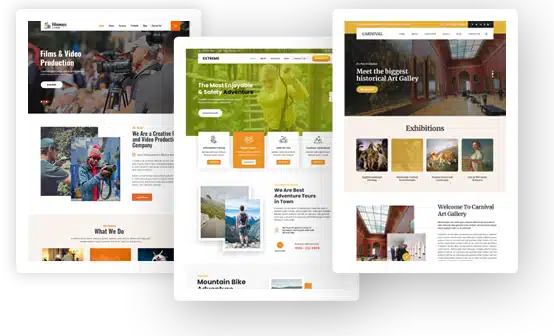Enhancing User Experience: Tips for Managing Advertising Content

The digital world loves ads—users, however, not so much. As online advertising grows, balancing monetization with a satisfying user experience (UX) is more critical than ever. The challenge? Ensuring ads capture attention without drowning users in relentless ad fatigue. This balance has significant impact: a 2023 report by Statista found that nearly 30% of users employ ad blockers, largely due to repetitive, intrusive content. So how can businesses manage to add content to improve engagement without alienating their audience? Below, we dive into strategic insights for enhancing UX through effective ad management.
1. Know Your Audience—and Then Know Them Better
Audience understanding is foundational. But here, it goes beyond mere demographics; it’s about knowing user preferences, behaviors, and tolerance levels. A personalized advertising approach has proven highly effective, with personalized ads seeing up to 67% higher conversion rates than generic ones. But personalization requires restraint—users don’t want to feel surveilled. Striking a balance between customization and subtlety ensures ads resonate with users’ interests without veering into invasive territory.
- Tip: Segment your audience into micro-groups. For instance, instead of targeting “millennials,” break down this demographic into interest-specific subgroups. Knowing that 35-year-olds may respond to entirely different content than 25-year-olds allows for more nuanced ad placements.
2. Limit Ad Frequency to Combat Fatigue
Ad fatigue is real. Show an ad too often, and users tune out—if they don’t outright reject your content. There are enough ad-blocking tips around us now to free ourselves from the influence of advertising. Those services that do not want to be blocked must use Google ads wisely and ethically. According to research by MediaMath, ad fatigue can kick in after just five views of the same ad. From that point on, engagement decreases sharply, while the probability of users opting out of ad exposure increases.
To curb ad fatigue:
- Tip: Use frequency capping to limit how often users see the same ad. Platforms like Google Ads and Facebook offer frequency cap settings, enabling brands to optimize exposure without oversaturation. A good rule of thumb is a cap between 3-5 views per user per week for high-value ads.
3. Diversify Ad Formats for a Fresh Experience
Varying ad formats can alleviate fatigue. Banner ads, video ads, carousel ads & testimonial ads—these options all offer unique advantages and break the monotony of static, repetitive visuals. Moreover, users are likely to engage more with a mix of ad types that capture attention in diverse ways.
- Tip: Experiment with interactive ads, like quizzes or polls, which have shown to increase engagement by up to 50% compared to static ads. Interactive ads add value to users by allowing them to participate, turning a passive ad experience into an engaging, active one.
4. Employ Contextual Targeting, Not Just Behavioral
Contextual targeting bases ad placements on the content users are already consuming, not just past behavior. This technique is effective because it aligns ads with user interests at the moment, increasing the chance of engagement. For instance, placing an ad for outdoor gear within a travel blog appeals directly to users’ active intent, creating a natural connection.
- Tip: Start with keyword-based contextual targeting. This way, if a user is reading about tech trends, they’re more likely to see ads related to new gadgets or software rather than unrelated services. Contextual targeting can yield 25% higher click-through rates by matching ad content with the environment users are actively exploring.
5. Prioritize Non-Intrusive Ad Placements
Nobody likes pop-ups. Intrusive ads disrupt the browsing experience, making users more likely to leave a site than engage with it. According to HubSpot, 73% of consumers dislike pop-up ads, especially those that appear before they’ve had a chance to explore the page. Instead, consider subtle placements that integrate naturally with your content.
- Tip: Opt for native advertising, which seamlessly blends into the surrounding content. Native ads receive 53% more views than traditional display ads and don’t interfere with user flow. An in-feed ad, for example, resembles a regular post, making it feel less like an interruption and more like an option.
6. Embrace Ethical Monetization: Quality Over Quantity
Many businesses rely heavily on ads for monetization, but the rush for revenue can lead to too many ads, undermining UX. A smart approach to monetization prioritizes fewer, high-quality ads that add value. Remember, quality content increases user loyalty, which can drive long-term monetization better than a quick burst of ad revenue.
- Tip: Use A/B testing to determine the right number and type of ads. Test variations with different ad placements and frequency to understand which configurations maintain engagement without tipping into fatigue.

7. Gather and Analyze User Feedback
Users often have insights that data alone doesn’t reveal. Gathering direct feedback lets you hear firsthand what users think of your ad experience. Consider using surveys, in-app feedback, or social media to gauge user sentiment about ads. Direct input can be invaluable in adjusting ad strategies to better meet user expectations.
- Tip: After collecting feedback, use it to refine your approach. For example, if users feel there are too many banner ads, test fewer or reposition them. Regular feedback loops help you stay aligned with user needs, creating a dynamic and responsive ad strategy.
8. Keep Testing and Optimizing
No ad strategy is static. As user preferences shift, so should your ad strategy. Data analytics can guide decisions by showing how users interact with your ads over time, revealing patterns that indicate when it’s time for a change. Constantly optimizing based on new trends, user behavior, and ad performance can make the difference between a good strategy and a great one.
- Tip: Track metrics like click-through rates (CTR), bounce rates, and time on page to understand ad impact. Tools like Google Analytics, SEMrush, or Hotjar offer valuable insights into how users respond to ads, allowing you to adjust campaigns quickly. A 2021 study by AdEspresso noted that continuous testing could increase engagement by up to 30%.
Conclusion
Enhancing user experience while managing advertising content isn’t about cutting ads altogether; it’s about making smart, user-centric choices. Whether through frequency caps, contextual targeting, diverse formats, or user feedback, the right approach ensures ads remain engaging without causing burnout. Remember, a carefully managed ad strategy that respects users’ time and preferences is likely to yield long-term loyalty and, ultimately, revenue.

